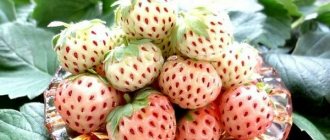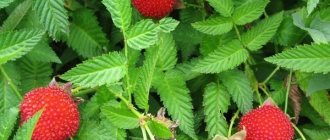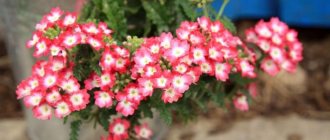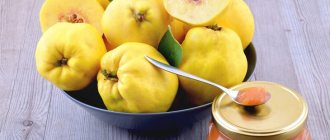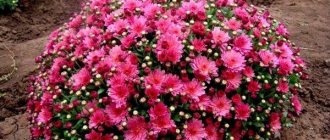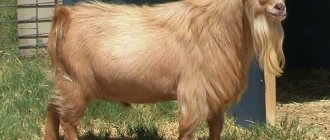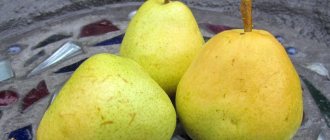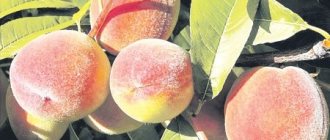Interesting! In the stephanandra flower, the stamens are arranged in a circle - this is the reason why stephanandra received the second name “male wreath”.
Description of the bush
Stefanandra is a squat, spreading plant of the Rosaceae family native to East Asia. It is a lodging deciduous shrub used in landscape compositions as decoration for stone fences, slopes, and terraces. It can grow uncontrollably in width, since shoots lying on the ground easily take root along almost the entire length.
The foliage is pointed, ovate or heart-shaped. There are varieties with heavily dissected leaf blades; their edges can be smooth or have sparse jagged edges. During the active growing season, the leaves have a light green color, which changes to yellow, orange, and brown-red with the onset of autumn.
The bush blooms in early summer with small buds with an unexpressed aroma, collected in loose inflorescences. The whitish petals have a pointed shape and frame a yellow spherical core. By the end of September, in their place, medium-sized leaflet fruits with small seeds ripen, which are formed in pairs in one ovary.
Varieties and types
The genus includes only four species of which two are usually grown - Stefanandra incisifolia and Tanaka.
Stefanandra incisifolia natural distribution area is Japan and Korea. The cultivated plant grows up to one and a half meters and has an attractive crown of carmine-colored branches. The foliage is not particularly large; by autumn it acquires bright, beautiful colors; on barren branches the leaves are larger. The flowers are white in color, small - only half a centimeter, collected in panicle inflorescences.
This species has a dwarf variety Stefanandra Crispa , which can be used as a ground cover plant. It is noteworthy that branches touching the ground take root very easily.
Stefanandra Tanaka shrub, growing up to 2 meters, has a spreading crown. The foliage is longer than that of Nadrezannolistnaya, placed on long petioles. The flowers are also small, white in color, and form panicles. Rarely grown in Russia, as it freezes quite heavily, but, nevertheless, it is mostly restored in the spring.
Varieties of stephanandra
The genus is very small, and in culture it is represented by only two basic varieties.
Incised leaf
Forms a spherical crown, the width of which gradually begins to exceed its height. It reaches a diameter of 2-2.5 m, but due to its slow growth, only specimens aged 15-20 years acquire such dimensions. The foliage is carved, openwork, short-petioled. The arrangement of the leaves is interesting - on both sides of the shoot, in the same plane. Flowering begins in May and lasts about a month.
A spectacular variety of this variety, Crispa, was bred for planting in open ground in gardens and park areas. It is distinguished by its compact dimensions, no more than 0.6 m in height and 2 m in width. If you look at a photo of Stefanandra of this variety, it will resemble a wide pouffe pillow, its thick, dense crown is so evenly distributed. Gradually, due to the rooting of shoots, this cushion grows and covers the accessible area with an impenetrable cover. It looks especially impressive in the fall, when it begins to change its color unevenly. Flowering is completely identical to the base species.
Stefanandra Tanaki
The Russian spelling Tanake is also found. A characteristic difference of the species is its larger leaves, up to 10 cm in length. The petioles, however, are just as short, their shape is heart-shaped, pointed, and the edges are double-serrate. On the reverse side of the leaf you can notice pubescence in the vein pattern. The inflorescences are also larger in size; they appear a month later than the previous variety and bloom until August. Their color is creamy-green, their number during flowering is enormous, so that they cover the entire crown with a continuous veil of their thread-like stamens. The shoots of the first year of life have a reddish tint, later they acquire a gray or pale brown color. The Tanaka variety is more capricious in care, wintering and planting.
Reproduction of stephanandra
Three methods are available for propagation - two vegetative and regenerative (by seeds).
Seed method
The plant's seeds do not need stratification; they can be sown immediately in the ground in the spring, as soon as consistently warm weather has established. There are no deviations from the traditional order of planting seeds. After the sprouts have become stronger, they must be planted, taking into account the future volume of the deciduous crown, no closer than 1.5 m from each other. If the seeds are grown by seedlings, they should be transplanted at least 6 months old, otherwise the roots may not be strong enough.
Cuttings
A simpler and more convenient method, especially preferable in the case of growing varietal varieties. Planting material is cut in the first half of summer; no additional processing of cuttings is required. When buried in ordinary garden soil, they take root in almost 100% of cases.
Lateral layering
As already mentioned, bush branches take root very easily when they come into contact with the ground. If a rooted shoot is separated from the mother bush, it will quickly form its own rosette and soon, but preferably next year, can be transplanted to a new place.
Diseases and pests
With proper care, this plant almost never gets sick, and pests especially do not touch it.
to gray rot , rust , and powdery mildew occurs . When these diseases appear, the affected parts are cut off and the plants are treated with fungicides.
If there is a lack of moisture the foliage begins to turn yellow . This also happens when there is excess or stagnation of water in the soil, then rot appears in the roots and the plant withers.
With the appearance of rot, you need to be very careful and if the disease has spread too much and there is no hope of saving it, then you need to remove the bush, burn it, and disinfect the area.
Soil requirements
The shrub can successfully grow on depleted soils, including rocky embankments and limited volumes of soil on supporting walls. It is much more difficult to tolerate excess moisture; stagnant places are not suitable for planting stephanandra or will require additional measures to ensure unhindered drainage of water.
The plant needs good drainage. To do this, you can mix broken bricks, pebbles or river sand into the soil. If the soil is too heavy or clayey, you need to add a significant proportion of sand and peat.
Weeds usually do not grow under the bush, so this plant does not need mulching.
Landing
The best time for planting is April. Before the frost arrives, the plant will take root and become stronger. Stefanandra loves warmth, sun, and windless weather. The best place for planting is windless, warm places. Therefore, this fact must be taken into account. Before planting a bush, you should prepare the soil:
- loves fresh, mineral-rich soil;
- the soil mixture includes: leaf soil, peat compost and sand 3:2:1;
- if the area is too clayey, drainage is needed;
- a layer of sand in the planting hole of 15 cm.
Planting stages:
- Dig a hole 0.5 meters deep, 0.6 meters wide
- Pour crushed stone or ground brick into the bottom of the hole.
- Pour 20 cm of sand
- Add soil
- Plant the bush in the soil
- Water thoroughly
Saplings
Stephanandra care
It is usually planted in areas exposed to the sun, but slight shading is also acceptable. Watering is carried out moderately, especially specimens planted in small volumes of soil need it. If the weather is rainy, they focus on the condition of the soil in order to prevent the rhizomes from becoming overgrown or rotting. In the absence of rain, one abundant watering every 1.5-2 weeks is sufficient. Timing is approximate and depends on soil type. For example, light sandy loams that quickly evaporate moisture will require more frequent moistening. It is advisable to keep the root circle in a loose state if the density of the planting allows unhindered access for this.
Wintering
Bushes usually do not need additional measures to insulate them in winter. The youngest shoots can be bent to the ground and covered with snow; adult plants tolerate even the coldest winters well. As a preventative measure, it is recommended to hill the tree trunk in the winter. In regions with a particularly harsh climate, in the spring you may find that the ends of the branches have dried out and frozen; they need to be immediately cut back to healthy tissue.
The incised leaf variety is more winter-hardy than Tanaki. In the northern regions it is recommended to give preference to it.
Trimming
Branches need to be trimmed both as a sanitary precaution (best after winter before plant juices begin to flow), and for a more decorative appearance, and as a rejuvenating procedure. This shrubby ground cover is the case when excessive thickening is detrimental to the decorative appearance of the planting. In addition, the middle shoots need sunlight just as much as the outer shoots, and in low light conditions they lose their foliage and fall off. Pruning helps control this process. It is also necessary to remove young shoots, which sprout in abundance from the side shoots. They dig it up along with the roots to stop unplanned reproduction.
Preparing the landing site
Preparatory activities differ depending on the choice of location. If this is cultivated land in a garden plot, the usual pre-sowing treatment with the addition of organic matter is sufficient - dry mullein, leaf compost, etc. Of the mineral complexes, preference is given to those recommended for decorative deciduous perennials.
If a place is allocated for ready-made seedlings on uncultivated soils, it is necessary to pay more attention to the preparation of planting nests. For this purpose, holes are dug half a meter deep, in which the excavated soil is mixed with turf soil, humus and river sand with a predominance of the first two components.
Replanting together with a ball of earth is permissible at any time during the active growing season. In the leafless state, it is easier to tolerate and adaptation occurs in a shorter time.
Top dressing
The granulated mineral complex is applied at the rate of 50-70g per planting unit. The composition can be replaced with granulated superphosphate in a slightly smaller amount of granulate per bush.
In this case, the application of other fertilizers will not be needed for about 4 years. In the future, organic fertilizing should be carried out annually in the spring by adding it to the tree trunk zone with shallow digging. The ideal option would be a 10-fold diluted infusion of mullein or a fermented infusion of weeds at the rate of 2-3 buckets of young, unseeded weeds per 200-liter barrel of water. Their action and nutritional value are approximately identical.
Use in landscape design
Stefanandra does not attract attention with bright flowers, but, being correctly placed on the site, it effectively plays up slopes, rocky fences, alpine hills or the banks of reservoirs. This is an ideal option for decorating height differences; its drooping shoots flow like a waterfall along vertical surfaces, and their light green tone contrasts perfectly with the dark needles or foliage of other bushes and trees. A single planting in the middle of a sunny lawn or a bright flower garden looks good. Dwarf Crispa is suitable for covering areas not intended for walking, or for planting in mixborders placed in the foreground of a garden plot or park area.

